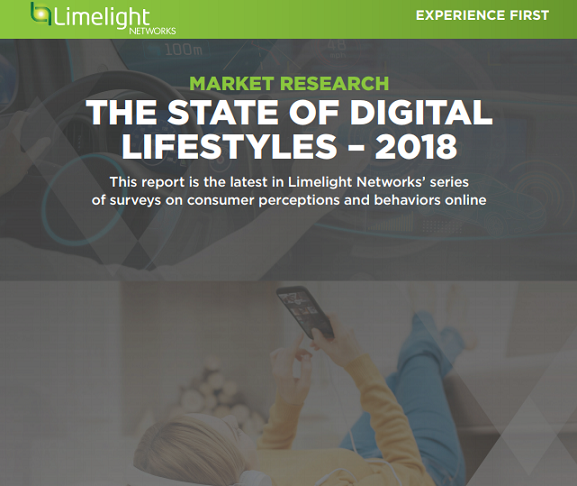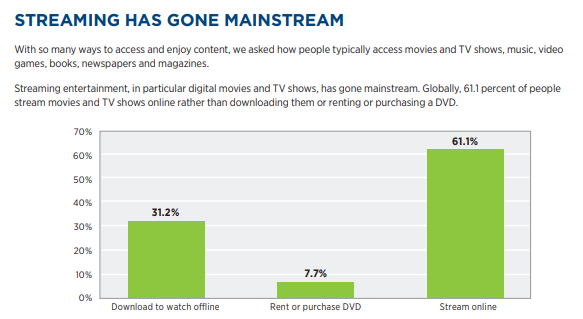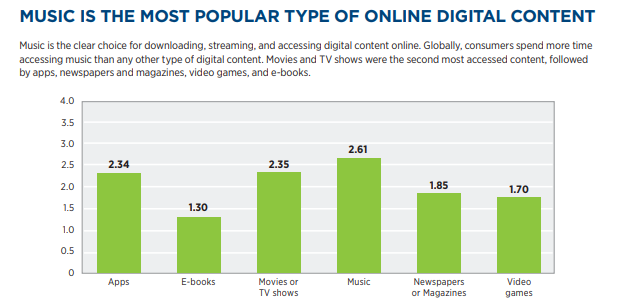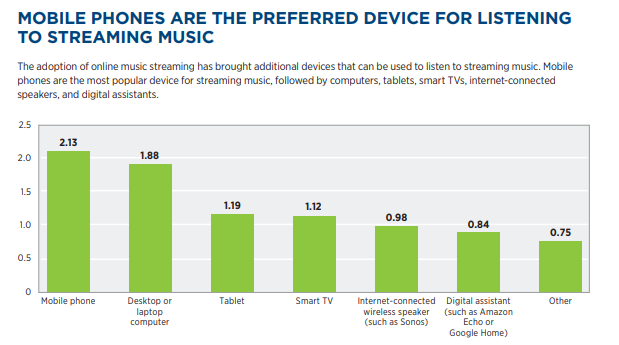
Consumers increasingly depend on technology and say it has positively impacted their lives
Consumers worldwide increasingly depend on internet-connected devices, with 80 percent reporting digital technology has made a positive impact on their lives. According to the new “State of Digital Lifestyles” report from Limelight Networks (Nasdaq: LLNW), a global leader in digital content delivery, mobile phones have become such an integral part of daily life that nearly half of consumers surveyed say they could not go a single day without them.
Respondents in ten countries were asked how they interact with digital media and the impact of technology on their lives. When asked how long people could part with their favorite digital devices, 48 percent of global consumers noted they would not be able to stop using their mobile phones for even one day. Dependence on phones was highest in Malaysia, where 69 percent of consumers noted they could not give up these devices. Laptop and desktop computers were the second most integral technology, with 33 percent of global respondents reporting they can’t go a day without theirs.

Consumers have yet to widely embrace digital assistants such as Amazon Echo and Google Home. Globally, only 19 percent currently own one of the devices, led by the U.S. at 35 percent, with Japan having the lowest adoption at seven percent. The main hurdle to adoption is that only 35 percent of consumers fully trust digital assistants to provide general information such as weather, news and research. Less than one-third (29 percent) fully trust digital assistants for online shopping, and just 22 percent trust them for home automation.
Additional insights from the report include:
Security is a top concern when using internet-connected devices. Nearly half (45 percent) of global consumers are concerned about the privacy of data collected by digital assistants, and 42 percent worry about security and potential hacking into the devices.

Entertainment has gone digital, with music leading the way. Globally, 61 percent of consumers prefer to stream movies and television shows online rather than downloading or using DVDs, and 53 percent prefer to stream music. Notably, only eight percent of global consumers still purchase audio CDs. Music is the most popular type of online content accessed by global consumers, followed by movies and TV shows, and apps.
Consumers expect high-quality online experiences. Most consumers (88 percent) are frustrated by the process of accessing and using digital content, with over one-third (37 percent) noting rebuffering or stopped playback as their primary frustration.
“Digital interactions play an increasingly important role in society today, making lives more connected and productive. As people become more reliant on these connected devices for information, entertainment, and to simplify everyday tasks, expectations for performance are rising,” said Michael Milligan, Senior Director at Limelight Networks. “At Limelight, we continue to develop innovative solutions that help content distributors and manufacturers address consumer demands for high-quality, responsive, and secure online experiences.”

Executive Summary
As internet speeds have increased and smartphones have become an integral part of everyday life, there has been an explosion of digital content and devices on which to consume it. Consumers can now easily access music, movies, TV shows, books, magazines and newspapers whenever and wherever they want. Internet-connected digital assistants such as Amazon Echo, Google Home, and Apple HomePod also make it easier than ever to access information and entertainment as well as automate tasks around the home. Digital devices and online content have become an integral part of our daily lives. However, they create new challenges and frustrations.
Consumers have embraced the flexibility and easy access to online music, with 60 percent accessing it weekly. Streaming is now the most popular way listeners enjoy digital music, with 53 percent streaming music online and 39 percent downloading music to listen offline. Only 8 percent still purchase audio CDs. Although there are many devices available for listening to streaming music, mobile phones are the most popular device, particularly for younger listeners.
The popularity of online video also continues to grow, with more than half of people watching online movies and TV shows each week. More than 61 percent of viewers stream video online while 31 percent download it for offline viewing. And when it comes to newspapers and magazines, readers have gone digital. More than 57 percent of people prefer to read newspapers and magazines online compared to just 25 percent who purchase physical copies.

Although consumers enjoy the easy access to online digital content, it does not come without its frustrations. More than 88 percent of consumers find the process of accessing digital content challenging. 37 percent cited content stopping playback and rebuffering as a frustration that disrupts their enjoyment of online digital content.
Consumers want the easy access to online digital content, but they aren’t eager to pay for it. Less than 50 percent will pay for movies, TV shows and music if it is not available online for free. Only 39 percent will pay to download apps to their phones, and less than a third will pay to read online newspapers and magazines.
Internet-connected digital assistants such as Amazon Echo, Google Home, and Apple HomePod have become increasingly popular. More than 19 percent of people currently own one of the devices and an additional 21 percent plan to purchase one in the next six months. However, many consumers are not ready to trust the devices to perform everyday tasks. Only 35 percent of people would definitely trust a digital assistant to provide general information such as the weather and news, and only 22 percent definitely trust it to perform home automation. Most consumers (80 percent) are concerned about the use of internet-connected devices with more than 40 percent citing security and hacking into devices as well as privacy concerns about data collected by the devices
The State of Digital Lifestyles report is based on responses from 5,000 consumers in France, Germany, India, Italy, Japan, Malaysia, Singapore, South Korea, the United Kingdom, and the United States age 18 and older who had downloaded software or streamed online video or music during the last month.

